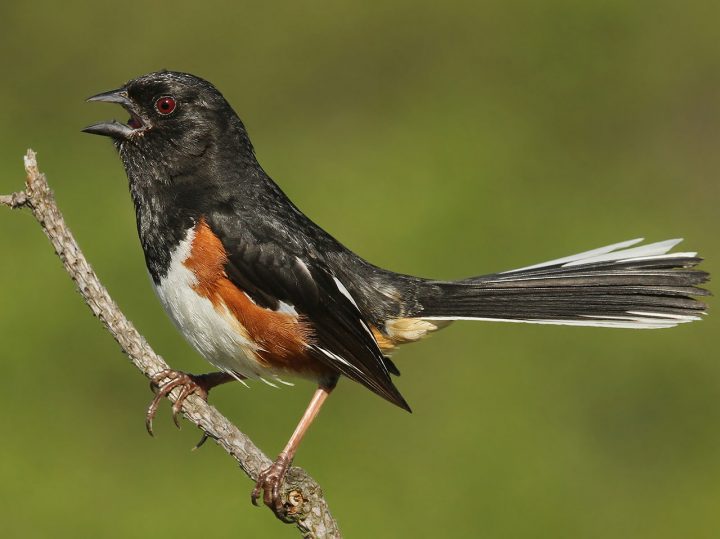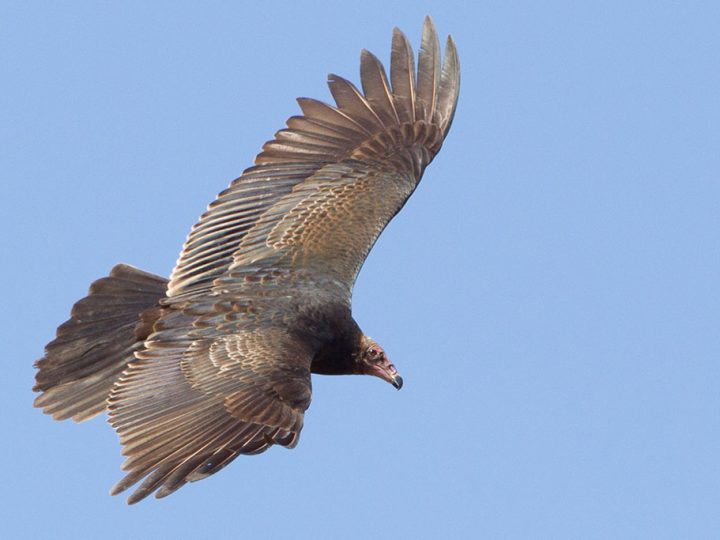Two Tips for Telling a Bird’s Age by Its Molt Patterns
By Nate Swick
June 8, 2017
From the Summer 2017 issue of Living Bird magazine. Subscribe now.
Late summer is the time when ragged, disheveled-looking birds start showing up at feeders. Gone is the sleek, clean look of spring. Some birds may even be missing feathers, as if they’ve come out the other end of a bar fight.
These birds aren’t sick—they’re molting. Feathers are the defining characteristic for birds, and critically important for everything from attracting mates, to keeping warm, to escaping predators. But they don’t last forever, and most feathers wear significantly over the course of a year. Breeding season can be particularly rough, because of the frenetic activity and increased abrasion from dozens of visits to well-hidden nests in dense brush or cavities.
By late summer feathers are often at their worst, but fortunately food resources—insects and seeds—are abundant. So there is plenty of energy around for birds to put into growing new feathers. After chicks have fledged and before it’s time to leave for migration, most adult birds take the opportunity to replace those worn feathers. The chicks, on the other hand, are fresh out of the nest, so their molt schedule is slightly different.
Knowing a bit about what birds look like during the molt can be very useful information. In birding circles, molt has a reputation as an advanced skill. But if you arm yourself with just a couple of basic ideas, they can reveal fascinating secrets about the birds you see.
Two-toned Towhees
Take a towhee, for instance—Eastern or Spotted, depending on which side of the continent you live on. A young towhee just out of the nest looks almost nothing like the dapper black-and-white adult males. Juveniles are brown and streaky, showing the towhee’s sparrow heritage, the better to stay hidden from threats while the young birds learn the ropes.
By fall these birds will have replaced those streaky body feathers with the more traditional towhee pattern: shiny black on the head and back (brown in females), with chestnut flanks and a white belly. But young birds molt only the body feathers, not the flight feathers in the wings and tail, because flight feathers need to be sturdy and so take more energy to replace. First-year towhees won’t replace their brownish flight feathers until the next fall.
So if you ever see a towhee hopping around your feeder with two-toned wings—nice black or rich brown scapulars and wing coverts; dingy brown primaries, secondaries, and tail—you can be sure that bird is a youngster that just hatched that past summer.

This adult Eastern Towhee has glossy black wing feathers that match the color of the back feathers, scapulars, and coverts. Photo by Ryan Schain/Macaulay Library, June, Massachusetts. 
This immature Eastern Towhee has molted into glossy black plumage on its upperparts. But take a close look at the primary feathers (forming the wingtip): they're worn and brown. This immature won't grow new, black wing feathers until the fall. Photo by Earl Orf, January, Florida.
American Goldfinches also show a difference between adult and young birds due to molting. For example, male American Goldfinches all look shiny yellow in summer, but if you see one with faded brown-black primaries, you know it’s a bird that just hatched the previous year. It looks a little like a person wearing a new suit and worn-out shoes. And once you can spot this pattern in towhees and goldfinches, you can look for it in other species, too.
Molt Limits: Mind the Gap
In its second year, a young bird will finally replace its first flight feathers. That’s a good time to check out its wings. Look for a pattern of worn old and pristine new feathers located right next to each other. This is called the “molt limit,” so named because it shows how far the bird has progressed in molting. It can be visible in adult birds, but is easiest to see in the second year.
Larger birds have larger feathers, which make them great subjects for looking at molt limits. While smaller birds squeeze in their molt between the end of breeding and the beginning of migration, larger birds don’t have that luxury. Feathers can only grow so fast, so larger birds often show evidence of molt for more of the year.
This condition allows birders to easily distinguish young birds from older ones. Take the Turkey Vulture, which can live for 16 years or more. Juveniles and adults look nearly identical, but adults nearly always show obvious signs of molt in the warmer months. It takes a Turkey Vulture over one year to grow its foot-long flight feathers, one by one. While adult Turkey Vultures are molting, their older flight feathers are tattered and abraded, and there are noticeable gaps in the wings where new feathers are growing, not unlike the toothy smile of a first grader. On the other hand, young Turkey Vultures recently out of the nest will show a pristine profile with brand new feathers all in good condition and giving an even outline to the wing. It’s a distinction that is obvious even when birds are soaring at great distances.
And it works for most large birds, not just Turkey Vultures: try it out with your local Red-tailed Hawks, pelicans, and cormorants. In fact, in the early 1980s this technique was instrumental in determining exactly how many California Condors remained in the wild.

This adult Turkey Vulture has lighter and darker feathers in its wings and tail—the lighter feathers are old and worn; the darker feathers are newer. A few shorter secondary feathers create a gap in the wing, indicating molting feathers that are still growing in. Molt patterns like these tend to appear in both wings symmetrically. Photo by Brian Sullivan, August, California. 
This immature Turkey Vulture has uniformly colored, fresh feathers that create an even outline in the wing. Photo by Brian Sullivan, August, California.
These two patterns are just the beginning of what molt can reveal about a bird. Some scientists have used molt patterns to understand whether a bird is a long- or short-distance migrant, or even as clues to when and where a bird breeds. So take a second look at those worn feathers. There’s a lot to be learned even when birds are not at their best.
Nate Swick is social media manager for the American Birding Association and hosts the ABA’s American Birding podcast. He lives in Greensboro, North Carolina.

All About Birds
is a free resource
Available for everyone,
funded by donors like you
American Kestrel by Blair Dudeck / Macaulay Library







